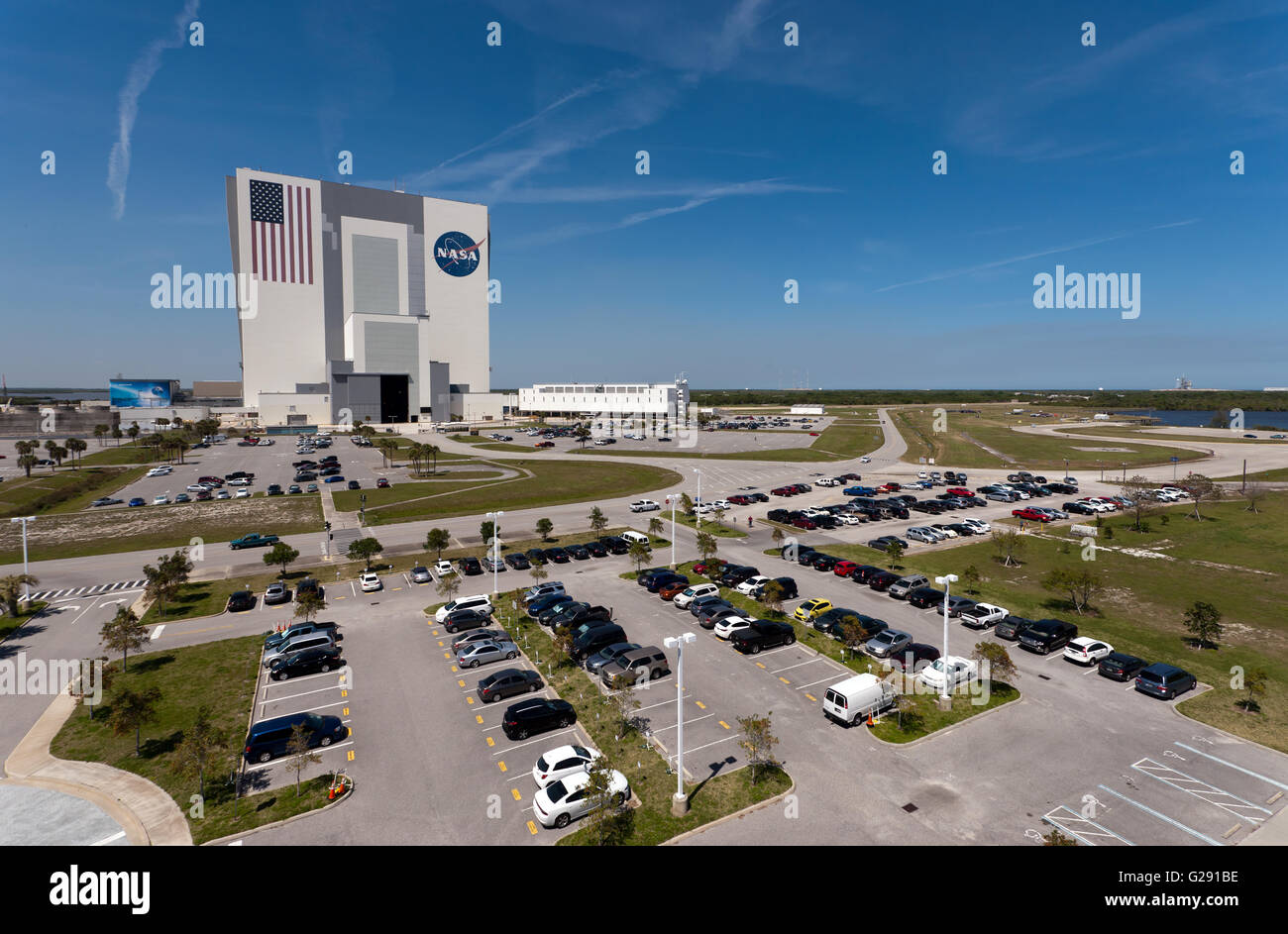A Wide-angle view of the Vehicle Assembly Building, or VAB, at NASA's Kennedy Space Centre, Merritt Island, Florida,

Image details
Contributor:
John Gaffen / Alamy Stock PhotoImage ID:
G291BEFile size:
56.9 MB (2.1 MB Compressed download)Releases:
Model - no | Property - noDo I need a release?Dimensions:
5502 x 3614 px | 46.6 x 30.6 cm | 18.3 x 12 inches | 300dpiDate taken:
8 April 2016Location:
The Kennedy Space Centre, Merritt Island, Florida, USA.More information:
The Vehicle Assembly Building, or VAB, at NASA's Kennedy Space Center (KSC) is a building designed to assemble large space vehicles, such as the massive Saturn V and the Space Shuttle. The future Space Launch System (SLS) will also be assembled there. At 3, 664, 883 cubic meters (129, 428, 000 cubic feet) it is one of the largest buildings in the world by volume. The building is at Launch Complex 39 at KSC, halfway between Jacksonville and Miami, and due east of Orlando on Merritt Island on the Atlantic coast of Florida. The VAB is the largest single-story building in the world, it was the tallest building (160.3 m) in Florida until 1974, and is still the tallest building in the United States outside an urban area. There are four entries to the bays located inside the building, which are the four largest doors in the world. Each door is 456 feet (139.0 m) high, has 7 vertical panels and 4 horizontal panels, and takes 45 minutes to completely open or close. The north entry that leads to the transfer aisle was widened by 40 feet (12.2 m) to allow entry of the shuttle orbiter. A central slot at the north entry allowed for passage of the orbiter's vertical stabilizer. To lift the components of the Space Transportation System, the VAB housed five overhead bridge cranes, including two capable of lifting 325 tons, and 136 other lifting devices. The American flag painted on the building was the largest in the world when added in 1976 as part of United States Bicentennial celebrations, along with the star logo of the anniversary, later replaced by the NASA insignia in 1998. It is 209 feet (63.7 m) high, and 110 feet (33.5 m) wide. Each of the stars on the flag is 6 feet (1.83 m) across, the blue field is the size of a regulation basketball court, and each of the stripes is 9 feet (2.74 m) wide. Work began in early 2007 to restore the exterior paint on the immense facility. Special attention was paid to the enormous American flag and NASA "meatball" insignia.